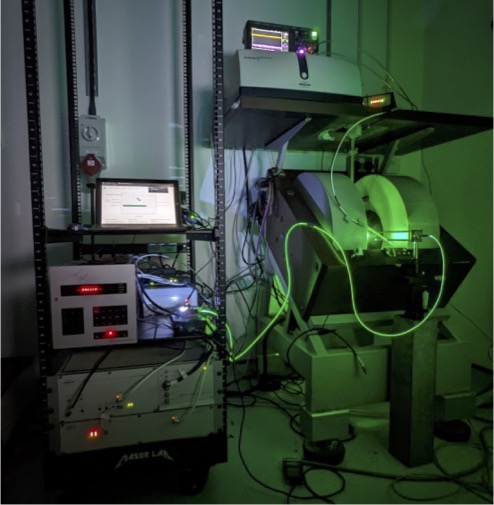“If a worker wants to do good work, they must first sharpen their tools.” ― Confucius, The Analects
Hardware
Electron paramagnetic resonance (EPR)
In the lab we perform electron paramagnetic resonance (EPR) spectroscopy on solid-state spins using a modified Bruker EMX spectrometer (up to 1.3 Tesla) with custom-built cavities and EPR bridge for continuous, pulsed and transient EPR. There is optical access for laser photo-excitation via optical fibre.
Nuclear magnetic resonance (NMR), Optically-Detected Magnetic Resonance (ODMR) and Ferromagnetic resonance (FMR)
An additional Bruker ECS spectrometer (up to 1 Tesla) is used for custom experiments such as nuclear magnetic resonance (NMR), optically-detected magnetic resonance (ODMR), ferromagnetic resonance as well as EPR and maser experiments.
Quantum sensing
Using optically detected magnetic resonance (ODMR) we can probe a smaller sample volumes, so the magnetic field homogeneity is less important allowing us to use permanent magnets and Helmholtz coils.
Microwave cavities
We build state-of-the-art microwave resonators: from aperiodic Bragg-reflector (photonic crystal) cavities with Q-factors of over 650,000 (at 30 GHz and room-temperature) to dielectric resonators with optimized Purcell factors for use in masers, cavity quantum electrodynamics and magnetic resonance.
Software
To design microwave components (like cavities, resonators etc) we mostly use open-source software such as MEEP, in-house codes (mode matching) and occasionally commercial software (CST Microwave Studio and COMSOL).
During the course of our research we use a variety of programming languages, such as Python, Julia, Matlab, Mathematica, Fortran, C/C++, Scheme and Perl.

